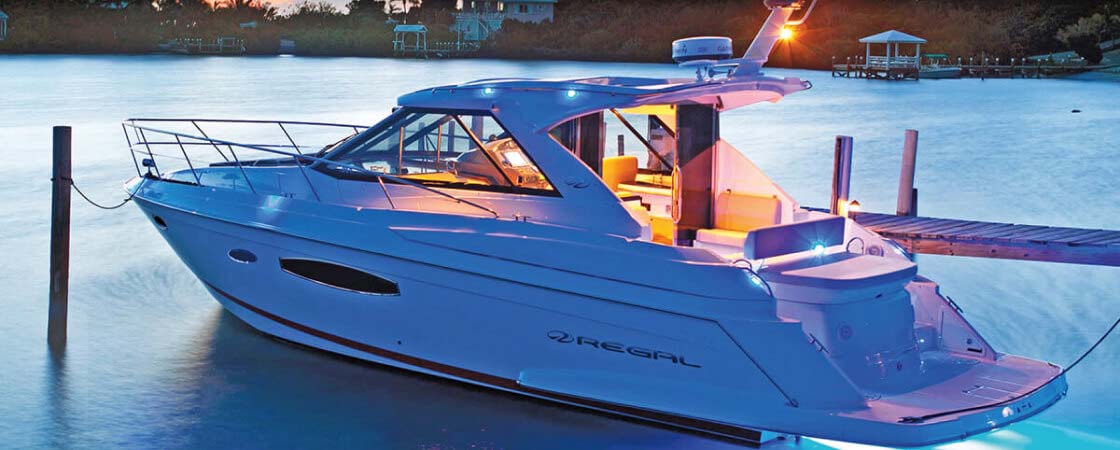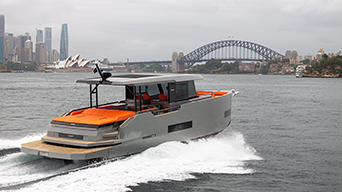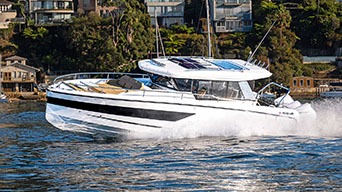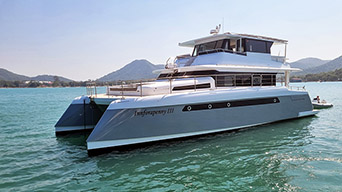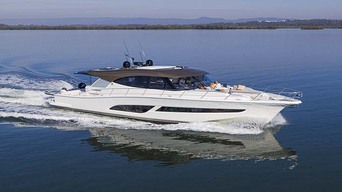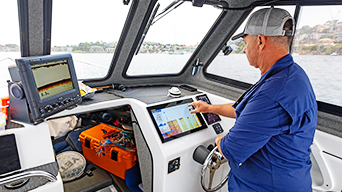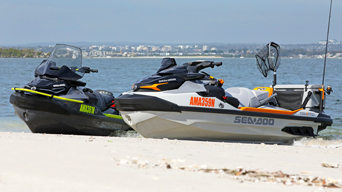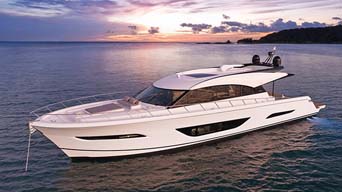Moving up to a 50-foot sportscruiser, you're in the realm of dual cranking batteries per motor and either one considerable battery bank that runs the inverter and DC house or a separate inverter bank and house bank. Bigger trawlers cart up to 20 batteries, providing 200AH each for house.
A battery's lifespan will suffer if you short-change on capacity. A small bank drops voltage quickly when subjected to load and the more you take out of a battery the faster it deteriorates.
Most boaties want all the 240-volt luxuries of home, like air-conditioning, but Rohan Collibee and others prefer to set up boats so they don't rely on generators running continuously.
"You can be more independent with solar panels and wind generators," he says. "I use appliances like 12-volt televisions and 12-volt fridges where possible, and people can charge their laptops and smartphones on 12-volts these days."
By running the boat's motor(s) during high-draw situations - operating the windlass and thrusters - the alternator bolsters the battery bank. They largely run at 14.2 to 14.4 volts under charge, dropping once load is applied.
Most people only replace their existing batteries when they fail or there has been a crisis such as submersion, whereas ongoing vessel usage really needs to be considered - installing new electronics or transitioning from day trips to extended stays, for example.
The third commandment is: "Batteries perform different functions and shalt be chosen accordingly."
Those designed for cranking (starting) have thin lead plates with extra surface-area contact for the acid solution, allowing them to deliver punch fast. They don't store a great deal of energy, however, being designed to discharge no more than two or three per cent before recharge.
A deep-cycle battery, as favoured for house usage, sports thicker plates and stores energy that can be dispersed over a longer period. As the name suggests, they're better at being deeply discharged.
The compromise for smaller boats is a single hybrid battery, roughly halfway between starting and cycling, and generally kept fully charged. From there you move into the different types.
Bargain basement is the traditional 'wet' lead acid type that requires maintenance. They're absolutely fine for the serious boatie, who goes out often and is prepared to check electrolyte levels every few weeks, topping them up when needed.
If that's not you, consider a maintenance-free sealed battery with more acid covering the plates. Over several years that acid will evaporate, so they need more fluid to begin with.
More advanced again is an AGM (Absorbed Glass Mat) battery, which is sealed, but has plates separated by matting that absorbs acid. An AGM can be inverted in the event of a yacht capsize or lain on its side. Most racing yachts require them under regulations, but they should be mandatory for all large cruising vessels, too.
The initial cost disadvantage of 30 to 40 per cent above a wet battery is vastly offset by the longevity. The design life on a good AGM will be eight to 10 years; roughly twice that of a maintenance-free battery. Deep cycling capability and shock resistance are also enhanced.
Next up are gel batteries, in which the acid in the glass mat is replaced with a liquid gel that's pumped into the battery and left to set. They're more expensive to make and buy, are heavier, and are typically better for deep cycling than cranking.
Lithium-ions are the pinnacle, offering a substantial (up to 70 per cent) weight and space saving, but adding complexity and cost, at least initially. They have three times the lifespan of traditional batteries and boast ultra-fast charging and discharging - down to 20 per cent and up to 100 per cent.
